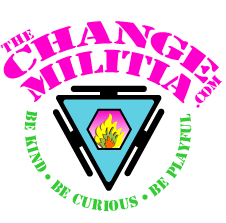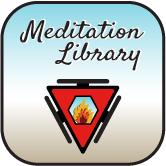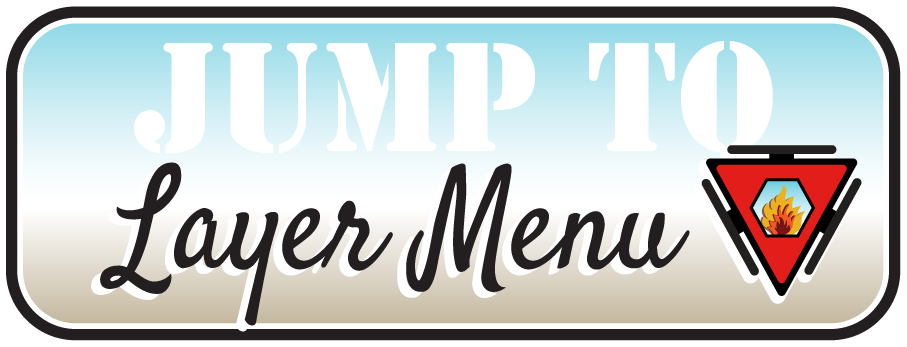Layer Ten, Week One – Sunday
- Read Week One Concepts
- Watch videos and read descriptions for Balancing Your Clocks and Reading Other’s Energy.
- Do Movements – Balancing Your Clocks and Reading Other’s Energy.
Sunday’s Focus
Spend the day identifying your reactions and responses. Everything you do is going to be one or the other.
Sunday’s Concepts
How to get ahead and stay ahead of fear – a primer.
Fear is always reactive. To conquer fear, be responsive. That is it. If you are always responsive, you will never be reactive. If you are never reactive, you will never be fearful. Sounds easy, right?
Here is where we will start.
A simple analogy. Change is a ball and you can choose to be a wall or a mitt. Influences, interactions, opportunities, and movement, internal and external, are constantly coming at you. If you are a wall, things will impact you and bounce off in a very fearful, reactive way. It will feel as if you are not in control. You will react without deliberation or consideration of consequences and potential benefit.
If you are a mitt, you will catch the ball and then decide what to do with it. You can keep it, throw it back the way it came, toss it in any other direction and decide how much velocity (energy) you want to give it. If you are a mitt, you can move out of the way of the ball and let it fly by. You will deliberate and consider which option has the most beneficial consequence.
The mitt is responsive. It absorbs and expands consciously. Be a mitt, not a wall.
Layer Ten, Week One – Monday
- Read Monday Concepts
- Do Movements – Balancing Your Clocks and Reading Other’s Energy.
Monday’s Focus
Throughout the day, track your reactiveness. Look back on each interaction and find the places where you reacted without consideration. Reflect on what the reaction felt like in your body and where you felt it.
Monday’s Concepts
Everything you encounter could trigger a fear reaction or it could highlight an opportunity. The encounters won’t change, how you interpret them can.
Yesterday, I got to hold a newborn. Our precocious 3-year-old next door, Mazzie, has a beautiful baby sister.
Today, it is my mom’s birthday. It has been over two years since her death.
All morning, I felt waves of emotion … and then I thought … What if grief isn’t the pain of loss; what if it is an upwelling of love so intense it overwhelms?
As I allow myself to deeply feel the sensations, they feel very similar to what I was feeling as I held Baby Lila yesterday. As emotion and memories of my mother flood my system, what if I change the label I place on the sensations that arise? What if I feel them as the gift of remembrance instead of sorrow, heartache, and grief?
As I allow myself to receive the gift of remembrance, my mood changes. Instead of grief, I feel gratitude.
Overwhelming gratitude is much easier to metabolize than overwhelming grief. Being responsive to the upwelling of emotion is much more beneficial than the spiraling despondency of the grief reaction.
Reactivity is rarely efficient, seldom beneficial, and is almost never fun and fulfilling.
Layer Ten, Week One – Tuesday
- Read Tuesday Concepts
- Do Movements – Balancing Your Clocks and Reading Other’s Energy.
Tuesday’s Focus
Today, celebrate your responsiveness. Reflect on every interaction and identify how often you were deliberate and considered the most beneficial consequence before responding. What did responsiveness feel like in your body?
Tuesday’s Concepts
Knowing how you are moving and the percentage of the energy you allocate to each (reaction and response) will help you move toward being more responsive, with less fear, and greater efficiency, benefit, and fulfillment.
Imagine what it might be like to exit every conversation without pain, suffering, jealousy, animosity, regret, envy, shame, or resentment. All those things are reactive. Stop being reactive and those things will stop too.
What would it be like to have endless patience, laser-like decisiveness, and profound empathy? Be responsive and you will be that person.
Let’s look at how each of the energy movements, components, and bodies can be reactive and responsive. Most of your movements will be a combination, you will react and respond.
Your bodies at each end of the spectrum:
Physical – On its own, your body reacts subconsciously to internal and environmental stimuli. That is homeostasis. It gets hot and you sweat. You run up a flight of stairs and your heart speeds up.
Your body responds to stimuli as well, you allow yourself to relax when someone rubs your shoulders. You might use your will to relax when a physical therapist is working your hamstrings.
Your body is also reflexive (hyper-reactive). You jerk your hand back when you touch something hot. You flinch when a tot wizzes a toy at your head and tense your whole body when you cold water splashes on you unexpectedly.
Static tension (stress held in your body) is a reaction to some perceived or habitual trigger. Actively relaxing is a response that you can use to relieve static tension.
Mental – This one is a bit easier to digest. Your conscious mind is usually your responsive mind and your subconscious mind is reactive. And they are constantly brawling with each other for supremacy.
When you grab a handful of pumpkin cookies without thinking, it is reactive. Your subconscious mind made the decision. When you see pumpkin cookies, deliberate, and then grab a handful, it is responsive. Reactivity is usually habitual. Responsiveness can be habitual or conscious. Habitual responsiveness will most often be something that confirms your comfort zone, deflates, or provides some sort of solace or relief. When you decide to have the cookies, even though you have made a commitment to lower your processed sugar intake, your reactive mind has dominated your responsive mind. When you pass up the pumpkin cookies, you either aren’t a fan of pumpkin or you are some sort of alien, a conscious and responsive alien.
Thoughts can be reactive or responsive. Yesterday, I ran 18 miles. Throughout the run, whenever I felt like I was about to hit a wall, I congratulated myself, boisterously. I started thinking about how proud I was of myself and allowed those thoughts to infuse my physical, energetic, and emotional bodies.
I chose to counter my reactive mind by responsively affirming that the discomfort I was experiencing was a sign of success.
Layer Ten, Week One – Wednesday
- Read Wednesday Concepts
- Do Movements – Balancing Your Clocks and Reading Other’s Energy.
Wednesday’s Focus
Pick a couple of interactions today and replay them in your head. Try to discern where you were reactive and how you could have responded. How might the change have felt different?
Wednesday’s Concepts
Emotional – Emotions are a reactive response. Your emotional body interprets the sensations present and then reactively assigns a label. The exception is when you consciously infuse your system with a certain configuration.
Anger is normally reactive but you can also decide to get mad. Most responsive anger is feigned. You might concoct a furious countenance to scold a child. You might pretend anger to shift your guilt. You might choose to get angry so that you don’t allow intimacy or grief.
If you respond, pretend, and feign, often enough, it becomes habit (reactive). I’m sure you know people who are habitually angry, cynical, depressed, nervous, etc. They convince themselves that they are angry and forget that it is artificial, manufactured, and disingenuous.
Environmental – Quite the mix here and usually some combination. You evaluate the environment and every relationship looking for threats and opportunities. When was the last time you had an interaction where you were completely fearful? When did you last see an interaction as nothing but an opportunity? Our contact with others and our environment is complex. That complexity encourages threat assessment. It is pretty challenging to be responsive all the time.
I was headed out for the aforementioned run yesterday and saw two neighbors talking on the lawn across the street. I said hello and one of them asked about Kelly. The other let her know Kelly was out of town and that Ed and I were bachelors. He implied that Ed had taken the place of Kelly. I felt my irritation rise, projected a demeaning quality to his comment, and chose to offer a quick wave (with all my fingers), get in the car, and head out.
Driving away, I reflected on that neighbor’s habit of being sarcastic and inappropriate, acknowledged that his coarseness had nothing to do with me and let it go (mostly). I did contemplate grabbing a cartoon-sized hammer and driving him into the ground like a tent stake.
The most beneficial use of my time was to leave. I reacted internally, responded externally and then made a decision that was most in line with my intention to go for a run.
Layer Ten, Week One – Thursday
- Read Thursday Concepts
- Do Movements – Balancing Your Clocks and Reading Other’s Energy.
Thursday’s Focus
Reflect on when your reactions are feigned. What face do you put on for others? Where are you insincere or inauthentic? What purpose is it fulfilling?
Thursday’s Concepts
Energy Body – It reacts subconsciously most of the time and can respond consciously.
People with no knowledge, training, or experience cannot move their energy consciously (responsively). The movements, meditations, and Kriyas you are learning will grow your ability to consciously direct your energy, within and outside of your body.
Your energy body provides the fuel for your other bodies and all your components. To the degree you master its nature, you will also master the movements of your bodies and components.
Let’s take a quick run through the components. Focus, Speed, Endurance, Strength, Flexibility, Stability, and Rejuvenation.
Focus – You focus. Where and what you focus on can be a subconscious reaction or a conscious response. Distraction is a reactive change of focus. When your focus is not on your intention, it is probably reactive.
Speed – The primary ingredients in speed are momentum, technique, and purpose. Your conscious mind helps to maintain speed by limiting distractions (being less reactive). When your momentum leads to passion, creativity, happiness, and curiosity, you will also be very responsive. Lack of speed will lead to confusion, insecurity, and boredom, likely places of reactivity.
Endurance – Endurance is composed of a tolerance for discomfort, efficient movement, collaboration, and essence. Endurance requires the ability to tolerate discomfort (responding instead of reacting). You chose to overrule your subconscious mind’s desire to quit. Endurance is your ability to fluidly metabolize the energy in your environment without getting overwhelmed (lower your reactivity).
Strength – Strength is the maximum amount of energy you muster against opposing forces. It is how powerfully you can hold or maintain your desired configuration, trajectory, or intention without submission. It can be consciously responsive or unconsciously reactive. Stubbornness is reactive. Determination is responsive.
Flexibility – Non-opposition, range, elasticity, and non-attachment are the parts of flexibility. Flexibility is your degree of chill. Flexibility is the essence of responsiveness. Sometimes, you might use your flexibility to counter your reaction. Flexibility is elastic, it tolerates discomfort and expansion without going into reaction. Rigidity is inflexibility, reactive is rigid. Flexibility is the ability to fluidly adapt to changing currents of energy.
Layer Ten, Week One – Friday
- Read Friday Concepts
- Do Movements – Balancing Your Clocks and Reading Other’s Energy.
Friday’s Focus
Connect your focus and stability to your reactions and responses. When, how, and why does your focus shift? When is the shift toward reaction and what triggers it? When do you shift to response and how might you facilitate that more often?
Friday’s Concepts
Stability – When l talk about stability, I am referring to the feeling of being centered, present, and accepting. Stability connects and unifies. Stability is cohesive; when you are stable, you can hold it together, not come unglued. Stability is the foundation of responsiveness. Your level of instability is directly related to your degree of reactivity.
Rejuvenation – You revive your energy to the degree your systems can recognize opportunities. To be able to look for opportunities, your bodies must feel safe and relaxed enough to not be defensive. Rejuvenation is a responsive configuration. Rejuvenation involves the acceptance and welcoming of the sensations/energy present. To be accepting and welcoming, you must be responsive. Responsiveness precedes rejuvenation.
As a reminder, Balance is when you are the most efficient, strong, and equally fluid in all your bodies and every component. Your success, happiness, and fulfillment flow effortlessly when you are flexible enough to maintain your balance. When balanced, you are responsive.
Let’s look at the energy movements we have been exploring the last couple of weeks.
Using the list of movements, spherical, pushing, pulling, swirling, curving, repelling, attracting, stifling, compressing, opposing, resistant, fragmenting, lopsided, dispersed, vaporizing, welcoming, inspiring, or filtering, which do you think are inherently reactive or responsive?
Spherical is reactive when you transition into threat assessment. It is responsive when you transition into opportunity assessment.
Pushing and pulling are both usually reactive. They might seem responsive, like when you are consciously pushing someone to make a particular decision, but the push (demand) has an underlying fear. If you are completely responsive, you will rarely, if ever, generate a push or pull movement.
Swirling energies are a response. They born from curiosity, fascination, and wonder. They are born and arise from a place of non-reaction.
Curving energies are a combination. You have an intention (response) and you are allowing a distraction (reaction). Your reaction draws you off-course.
Repelling is reactive. It is brought on by some fear trigger (the ball bouncing off the wall).
Compressing, opposing, resistant, fragmenting, dispersed, vaporizing, and filtering are all typically reactive. They create distance and ignore opportunity.
Welcoming and inspiring are responses to opportunity. They require a lack of opposition.
Layer Ten, Week One – Saturday
- Read Saturday Concepts
- Do Movements – Balancing Your Clocks and Reading Other’s Energy.
Saturday’s Focus
Under what circumstances does your lack of tolerance for discomfort lead to reaction? When is your flexibility lacking? When does expansion lead to reaction?
Saturday’s Concepts
Knowing how your energies are moving and the percentage of the energy you allocate to reaction and response will help you move toward being more responsive, with less fear, and greater efficiency, benefit, and fulfillment.
View your reactivity like a triage. Feel your reactivity and when, where, and how you are the most reactive. Use some of the tools you have learned to lower the value you place on your most energy-sucking reactions. Let the feelings you associate with your reactions release and disperse into your system.
What are you biggest triggers? Why? What benefit are you receiving from allowing yourself to be reactive? How does it soothe your subconscious desire to stay in a comfortable and familiar place? What do your triggers feel like before you allow them to become reactions?
Which of your reactions have become habit? How do those reactive habits confirm the limiting beliefs you have about your life, job, family, relationships, and the world around you? What do your reactive habits feel like? How do those feelings confirm your limiting beliefs?
What bad things do you believe will happen if you don’t react? How do you preemptively tense your body to collude with those beliefs?
What opportunities (changes) are you afraid of if you choose to be responsive instead of reactive? How do you stifle your physical, emotional, and energetic bodies to prevent change?
Reactivity rests in the desire, usually subconscious, to limit change, growth, and expansion.
Reactivity is the fear of letting go of fear.
Balancing Your Clocks
(I reference the Balancing Your Bodies movement. Find it in Layer Eight, Week Four)
Step 1 – Create a simple movement that has a clear start and finish.
Step 2 – Connect with the physical movement and feel the start and the finish as distinct points and sensations.
Step 3 – Mentally connect with the movement by focusing your mind on the concept of the start and finish. Verbalize if that helps.
Step 4 – Connect your emotional body to the feeling of start and finish. If it helps, use an emotional memory (start/end of relationship) to assist you in feeling the beginning and the ending.
Step 5 – Use the feeling of expansion from a foundation to highlight your energetic clock. The beginning will feel centered and balanced and then the energy will expand to the finish point.
Step 7 – For the environmental component, feel your expanding contact with your environment.
Step 8 – This is complex and might require some practice. Consider doing the movement incrementally. Start by connecting each body to the physical movement and then add additional bodies as your ability to multi-task improves.
Why it Matters – Balancing the clocks in each of your bodies will keep you efficient, energized, and present. When you make a habit of keeping your clocks balanced, your subconscious mind will default to it. Your subconscious mind will begin to try to help your clocks stay balanced because synced clocks will feel normal.
Everyday Usability – If you do this daily, the time it takes to get sync your clock (pun intended) will decrease. What might take 30 minutes now will only take a couple of minutes after your systems adapt.
Progression – The next stage will be to begin to feel the rhythms of other people’s clocks. A regression might be to feel how unsynchronized your clocks are before beginning the movement.
Reading Other’s Energy
Step 1 – During interactions with others, feel for the energy movement of others.
Step 2 – As you somatically witness the people around you, feel for the quality of energetic movement.
Step 3 – Feel for movements like: expanding, defensive, out of body, stagnant, frenetic, spherical, pushing, pulling, swirling, curving, repelling, attracting, stifling, compressing, opposing, resistant, fragmenting, lopsided, dispersed, vaporizing, welcoming, inspiring, or filtering.
Step 4 – Your intention is to feel for the energetic transitions people are experiencing and to connect with people’s energy field.
Why it Matters – The majority of the connection we have with others is non-verbal. This meditation is the beginning of your journey into energetic communication and communion.
Everyday Usability – This exercise will help you feel the trajectory of conversations, connections, and relationships. It will give you a whole new perspective on communication and intimacy.
Progression – From here, you will practice tracking energetic transitions in yourself as you track them in others.

















